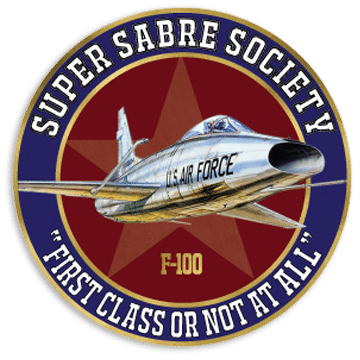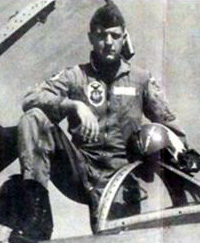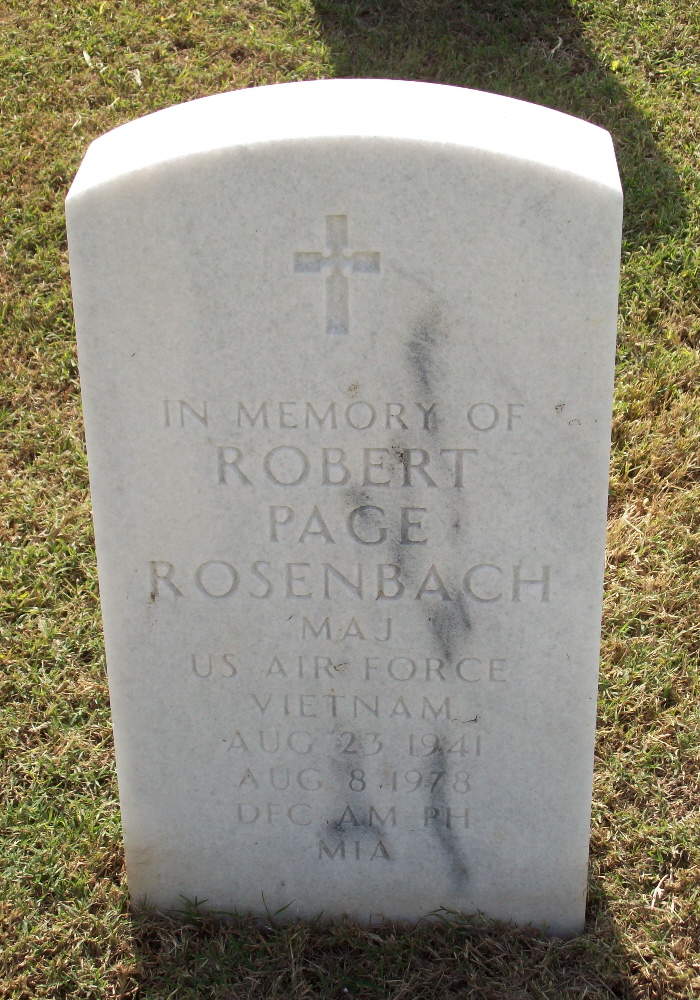In 1970 Major Robert Page Paulsen was serving with the 308th Tactical Fighter Squadron, 31st Tactical Fighter Wing, 7th Air Force out of Tuy Hoa AB, Vietnam.
“On March 5, 1970, Rosenbach departed Tuy Hoa (flying F-100D #56-3121) at 0233 hours in a flight of two F-100s on a night combat Sky Spot mission over the Demilitarized Zone (DMZ). His radio call sign was “Litter 4.” During the mission, his aircraft lost its UHF transmitter, but Rosenbach could receive voice transmissions from the flight leader (Litter 3) and respond in a limited fashion by depressing the microphone button, transmitting “clicks” to Litter 3. The bombing run was completed without mishap, and the flight returned to base.
About four miles away from the base, with fuel stores low, the two aircraft positioned for a circling approach to the runway. At this time, the flight leader cleared Rosenbach to land first because of his defective radio. Litter 3 was in visual contact with Rosenbach and observed him begin a right bank preparing to land.
Base radar plotted Rosenbach’s aircraft course shortly after 0430 hours as it overshot the approach and continued in a northeasterly direction. When the aircraft had reached a position about eight miles from the base, over the South China Sea, Rosenbach switched his IFF transponder to the emergency position.
Shortly afterward, Rosenbach went off radar and disappeared, indicating that the aircraft had crashed and ceased to move, or continued near ground or sea level so as to be traveling under the radar scope.
At 4:45 a.m. an organized search was initiated using 15-18 Army and Air Force helicopters and light aircraft controlled by a C130 aircraft, as well as three U.S. Navy and South Vietnamese vessels.
Electronic and visual searches were conducted over land areas and Navy vessels searched over water throughout the following two days. A 25-mile radius from the last radar contact point was searched without success. (It was determined that, because of low fuel states, Rosenbach would have gone down within this radius.) Searchers found two small oil slicks and one patch of floating debris, but it was determined that they did not come from Rosenbach’s aircraft.
On March 5, a beeper (emergency signal) was heard for a short period in the Tuy Hoa area, but it was too brief to pinpoint precisely. However, search and rescue personnel believed that the transmitter was in enemy hands.
The search was ended at 2130 hours on March 7, and Rosenbach was classified Missing in Action. Because of the great number of fishing boats present offshore, it was considered possible that Rosenbach could have ejected and been picked up by Vietnamese unfriendly to the U.S.
It was also considered that Rosenbach might have ejected over land and been captured or lost in an isolated area. In assessing the chances of Rosenbach’s survival it was noted that he had the standard survival equipment on board, including parachute and survival kit with life raft, life preserver, and survival gear. He had attended jungle survival school and the waters were relatively calm.
Rosenbach’s status was reviewed annually, and, in 1978 Lt Rosenbach was declared dead based on no proof he was alive.” (2)
At the time of his death, Robert Rosenbach was married with a daughter named Ginger. Robert’s name is inscribed on the Courts of the Missing at the Honolulu Memorial.
Sources: Bio info an (1) HonorStates.org; Photos and (2) Findagrave.com;










